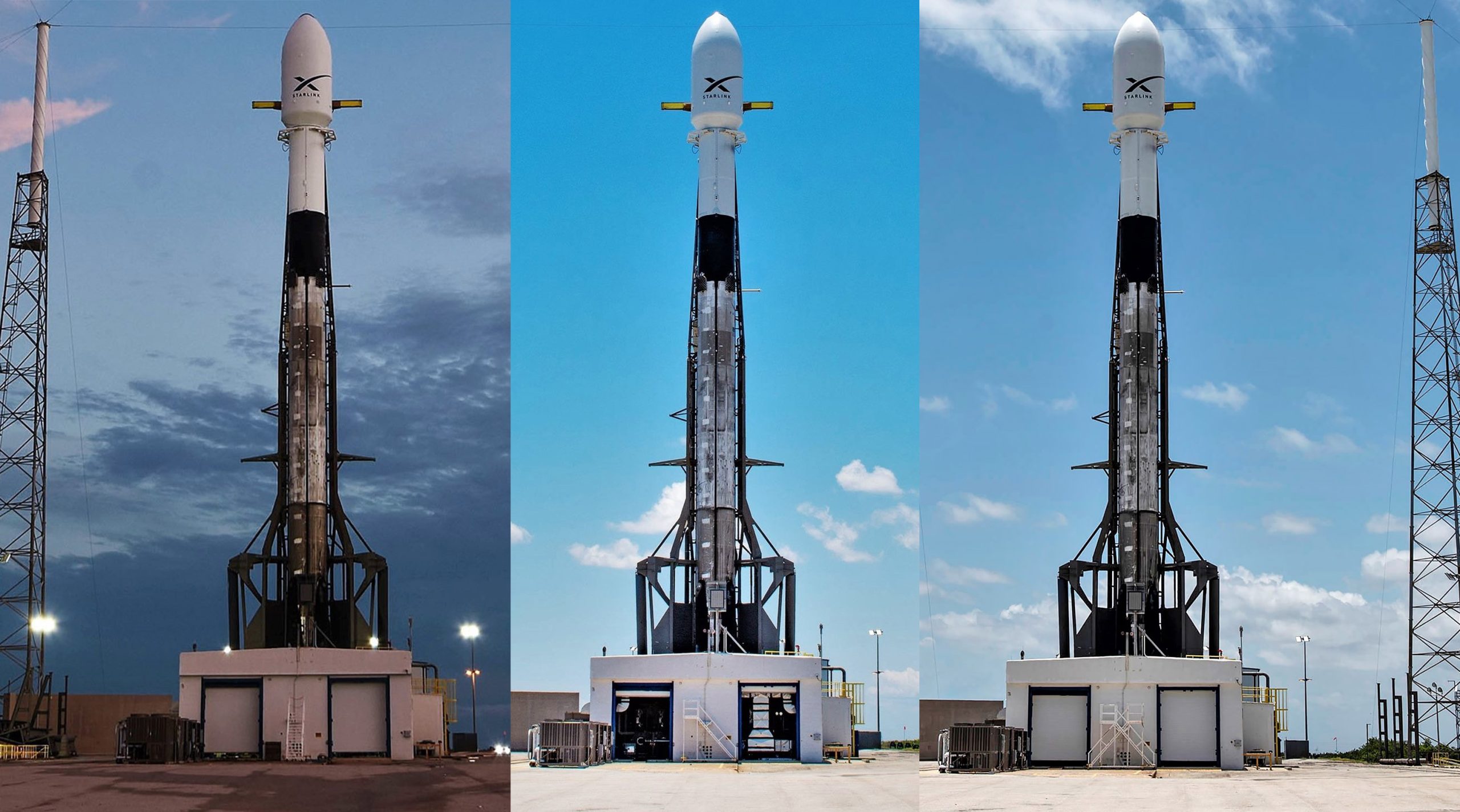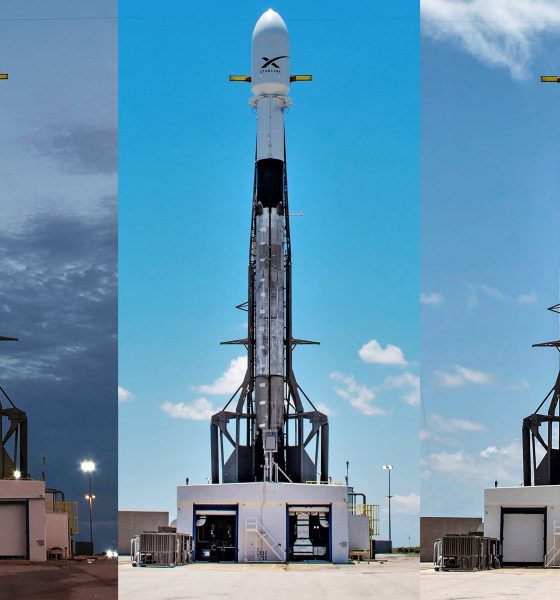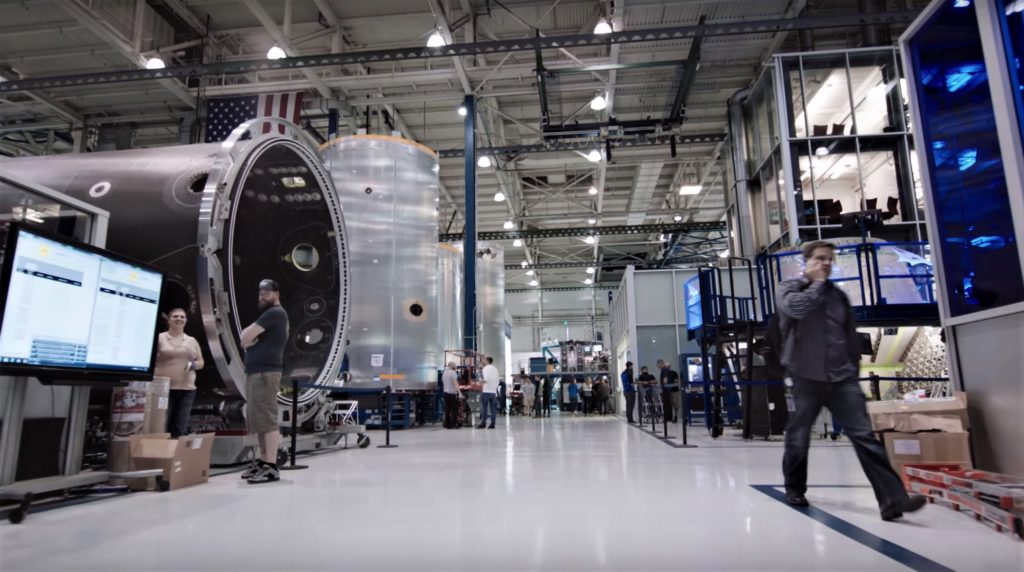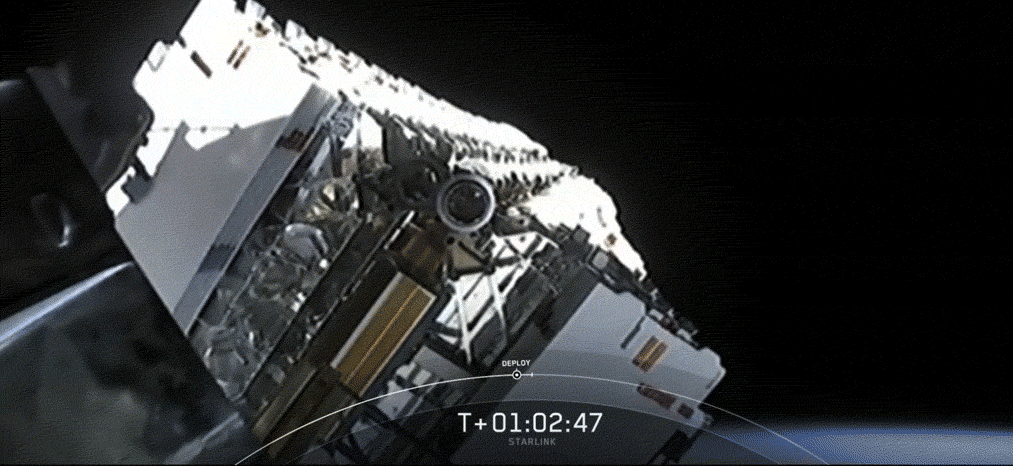

News
SpaceX’s next Falcon 9 missions likely two back-to-back Starlink satellite launches
Hinted at by a launch photographer and confirmed by an article published on NASASpaceflight.com, it appears that SpaceX’s next Falcon 9 launch is at least a month away and will likely be the company’s first operational Starlink mission, deemed “Starlink 1”.
Barring a surprise mission in the interim, this means that SpaceX is going to have a gap of at least two months between customer launches, something the company has not experienced since mid-2015 – more than four years ago. As such, it’s an extremely happy coincidence that SpaceX may now have internal Starlink launches to fill lulls in its commercial launch manifest.
Like any production and services-focused company, SpaceX incurs operational costs whether or not its services are being used – employees, leases, supplier contracts, and more still need to be paid for, facilities still need upkeep, long-lead production can’t simply pause, and many other recurring costs can’t be avoided. In theory, supplementing commercial launches with internal launches thus limits SpaceX’s downtime and effectively increases overall capital efficiency.

Flatsat revolution
Enter Starlink, a colossal ~11,800-satellite broadband internet constellation nominally designed, manufactured, launched, and operated by SpaceX. On May 23rd, after approximately one week of delays, a twice-flown Falcon 9 booster lifted off for the third time in support of SpaceX’s first dedicated Starlink launch, an unparalleled 60-satellite beta test known internally as “Starlink v0.9”.
Upsetting all expectations, SpaceX managed to fit en incredible 60 high-performance Starlink satellites into Falcon 9’s unchanged payload fairing – middle of the ground in terms of usable volume. Weighing anywhere from 16,000 kg to 18,500 kg (35,300-40,800 lb), SpaceX’s very first dedicated Starlink launch also crushed the company’s record for heaviest payload launched by several metric tons.
In a fascinating turn of events, SpaceX ultimately sided with a largely unprecedented form factor for its operational Starlink satellites, resulting in ultra-thin, rectangular spacecraft that can be stacked like cards and feature their own integrated locking and stacking mechanisms.


A paradigm shift
According to NASASpaceflight.com, SpaceX’s first and second operational Starlink missions (Starlink 1 and 2) are scheduled to launch no earlier than (NET) October 17th and November 4th, while a similarly trustworthy source puts Starlink 1’s launch date NET “late October”.
Given that Starlink v0.9 was effectively a massive flight test meant to tease out issues with the satellites’ designs, any new any satellites launched in the coming months will have almost certainly been manufactured, assembled, and prepared for flight in just a few months. Unfortunately, out of the 60 satellites launched in May 2019, 10 (16.5%) have been decommissioned for unknown reasons, although the remaining 50 (83.5%) have reached their final orbits and are believed to be in good health.
Put simply, a >15% failure rate is not acceptable for an operational constellation of thousands of satellites, meaning that SpaceX will likely continue to refine and improve its Starlink design before truly ramping up production and launch cadence. Unless the issues leading to multiple satellite failures were relatively simple or expected, the company’s next one (or two) Starlink launches could be closer to “v0.95” than the first fully operational missions. Time will tell.
For now, the fact alone that SpaceX reportedly plans to complete its 180th high-performance satellites barely nine months after beginning high-volume production is dumbfounding. Incredibly, building 180 satellites in 9 months is, by all means, a low-volume run relative to what SpaceX will need to achieve to launch its full Starlink constellation by late 2027. A production rate of 180 Starlink satellites per month is much closer to the necessary production and launch cadences needed for SpaceX’s deployment milestones.

Regardless, for the time being, it appears that odds are good that SpaceX will be able to make good on its promise of launching 2-6 Starlink missions in 2019. According to SpaceX, Starlink can begin offering serious commercial broadband services in regions of the northern US and southern Canada once 360 satellites are safely in orbit.
If SpaceX manages to launch two quasi-operational Starlink missions in the span of a month (Oct-Nov), that initial operations milestone could come just a few months into 2020.
Check out Teslarati’s Marketplace! We offer Tesla accessories, including for the Tesla Cybertruck and Tesla Model 3.

News
Tesla aims to combat common Full Self-Driving problem with new patent
Tesla writes in the patent that its autonomous and semi-autonomous vehicles are heavily reliant on camera systems to navigate and interact with their environment.

Tesla is aiming to combat a common Full Self-Driving problem with a new patent.
One issue with Tesla’s vision-based approach is that sunlight glare can become a troublesome element of everyday travel. Full Self-Driving is certainly an amazing technology, but there are still things Tesla is aiming to figure out with its development.
Unfortunately, it is extremely difficult to get around this issue, and even humans need ways to combat it when they’re driving, as we commonly use sunglasses or sun visors to give us better visibility.
Cameras obviously do not have these ways to fight sunglare, but a new patent Tesla recently had published aims to fight this through a “glare shield.”
Tesla writes in the patent that its autonomous and semi-autonomous vehicles are heavily reliant on camera systems to navigate and interact with their environment.

The ability to see surroundings is crucial for accurate performance, and glare is one element of interference that has yet to be confronted.
Tesla described the patent, which will utilize “a textured surface composed of an array of micro-cones, or cone-shaped formations, which serve to scatter incident light in various directions, thereby reducing glare and improving camera vision.”

The patent was first spotted by Not a Tesla App.
The design of the micro-cones is the first element of the puzzle to fight the excess glare. The patent says they are “optimized in size, angle, and orientation to minimize Total Hemispherical Reflectance (THR) and reflection penalty, enhancing the camera’s ability to accurately interpret visual data.”
Additionally, there is an electromechanical system for dynamic orientation adjustment, which will allow the micro-cones to move based on the angle of external light sources.
This is not the only thing Tesla is mulling to resolve issues with sunlight glare, as it has also worked on two other ways to combat the problem. One thing the company has discussed is a direct photon count.
CEO Elon Musk said during the Q2 Earnings Call:
“We use an approach which is direct photon count. When you see a processed image, so the image that goes from the sort of photon counter — the silicon photon counter — that then goes through a digital signal processor or image signal processor, that’s normally what happens. And then the image that you see looks all washed out, because if you point the camera at the sun, the post-processing of the photon counting washes things out.”
Future Hardware iterations, like Hardware 5 and Hardware 6, could also integrate better solutions for the sunglare issue, such as neutral density filters or heated lenses, aiming to solve glare more effectively.
Elon Musk
Delaware Supreme Court reinstates Elon Musk’s 2018 Tesla CEO pay package
The unanimous decision criticized the prior total rescission as “improper and inequitable,” arguing that it left Musk uncompensated for six years of transformative leadership at Tesla.

The Delaware Supreme Court has overturned a lower court ruling, reinstating Elon Musk’s 2018 compensation package originally valued at $56 billion but now worth approximately $139 billion due to Tesla’s soaring stock price.
The unanimous decision criticized the prior total rescission as “improper and inequitable,” arguing that it left Musk uncompensated for six years of transformative leadership at Tesla. Musk quickly celebrated the outcome on X, stating that he felt “vindicated.” He also shared his gratitude to TSLA shareholders.
Delaware Supreme Court makes a decision
In a 49-page ruling Friday, the Delaware Supreme Court reversed Chancellor Kathaleen McCormick’s 2024 decision that voided the 2018 package over alleged board conflicts and inadequate shareholder disclosures. The high court acknowledged varying views on liability but agreed rescission was excessive, stating it “leaves Musk uncompensated for his time and efforts over a period of six years.”
The 2018 plan granted Musk options on about 304 million shares upon hitting aggressive milestones, all of which were achieved ahead of time. Shareholders overwhelmingly approved it initially in 2018 and ratified it once again in 2024 after the Delaware lower court struck it down. The case against Musk’s 2018 pay package was filed by plaintiff Richard Tornetta, who held just nine shares when the compensation plan was approved.
A hard-fought victory
As noted in a Reuters report, Tesla’s win avoids a potential $26 billion earnings hit from replacing the award at current prices. Tesla, now Texas-incorporated, had hedged with interim plans, including a November 2025 shareholder-approved package potentially worth $878 billion tied to Robotaxi and Optimus goals and other extremely aggressive operational milestones.
The saga surrounding Elon Musk’s 2018 pay package ultimately damaged Delaware’s corporate appeal, prompting a number of high-profile firms, such as Dropbox, Roblox, Trade Desk, and Coinbase, to follow Tesla’s exodus out of the state. What added more fuel to the issue was the fact that Tornetta’s legal team, following the lower court’s 2024 decision, demanded a fee request of more than $5.1 billion worth of TSLA stock, which was equal to an hourly rate of over $200,000.
Delaware Supreme Court Elon Musk 2018 Pay Package by Simon Alvarez
News
Tesla Cybercab tests are going on overdrive with production-ready units
Tesla is ramping its real-world tests of the Cybercab, with multiple sightings of the vehicle being reported across social media this week.

Tesla is ramping its real-world tests of the Cybercab, with multiple sightings of the autonomous two-seater being reported across social media this week. Based on videos of the vehicle that have been shared online, it appears that Cybercab tests are underway across multiple states.
Recent Cybercab sightings
Reports of Cybercab tests have ramped this week, with a vehicle that looked like a production-ready prototype being spotted at Apple’s Visitor Center in California. The vehicle in this sighting was interesting as it was equipped with a steering wheel. The vehicle also featured some changes to the design of its brake lights.
The Cybercab was also filmed testing at the Fremont factory’s test track, which also seemed to involve a vehicle that looked production-ready. This also seemed to be the case for a Cybercab that was spotted in Austin, Texas, which happened to be undergoing real-world tests. Overall, these sightings suggest that Cybercab testing is fully underway, and the vehicle is really moving towards production.
Production design all but finalized?
Recently, a near-production-ready Cybercab was showcased at Tesla’s Santana Row showroom in San Jose. The vehicle was equipped with frameless windows, dual windshield wipers, powered butterfly door struts, an extended front splitter, an updated lightbar, new wheel covers, and a license plate bracket. Interior updates include redesigned dash/door panels, refined seats with center cupholders, updated carpet, and what appeared to be improved legroom.
There seems to be a pretty good chance that the Cybercab’s design has been all but finalized, at least considering Elon Musk’s comments at the 2025 Annual Shareholder Meeting. During the event, Musk confirmed that the vehicle will enter production around April 2026, and its production targets will be quite ambitious.








